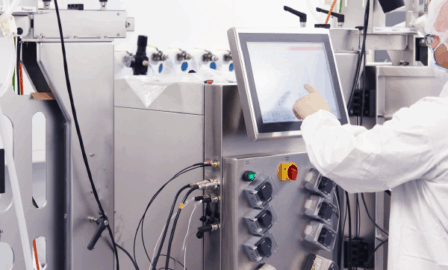2020 Pharmaceutical Trends
Read our updated report here: 2021 Pharmaceutical Industry Trends
The 2020 pharmaceutical trends reflect the broad shifts currently impacting the industry as it moves from the blockbuster model that dominated for decades to one more focused and patient-centric. The realities of many of the transformational clinical and technological breakthroughs in the pharmaceutical industry are coming to a head in 2020, forcing drug makers to evaluate, dismantle, and rebuild core aspects of their business. An active geopolitical landscape is simultaneously placing new pressures on organizations to become more agile and efficient in their operations. Businesses in the pharmaceutical industry must be prepared to forge ahead with a mindset of change and adaptability in order to meet these trends with sustainable success.
Download the 2020 Pharmaceutical Trends Here
Regenerative Medicine Market Explosion Impact on Manufacturing Capacity
In 2019, a little over 1000 clinical trials were being conducted globally on regenerative medicines, specifically gene and cell therapies. In 2019, this market’s value was $13B but is expected to reach ~$74B by 2027, a CAGR of 24%. This growth is driven by the rise in chronic diseases, genetic disorders, and government investments (Cures Act-2016). Even though small molecule drugs still dominate the number of New Molecule Entities (NME) that are approved by the FDA each year (71%) and have an abundant number of products in research and development (approximately 8,000 as of 2018), its growth is slowing vs, large molecule drug, which the majority regenerative medicines are classified under. As of 2019, 5,000 large molecule drugs are in development.
The FDA is expecting 200+ Investigational New Drugs (IND) per year starting in 2020 with the majority of them being cell and gene therapies. And by 2025, the FDA is expected to approve 10-20 cell and gene therapy products a year with a large number of these approvals expected to be expedited via the FDA Expedited Approval Programs (e.g. Fast Track, Breakthrough Therapy, etc.). With this incredible explosion of regenerative medicines in R&D and clinical trials, both sponsors and their supply chain partners have been investing significant capital in developing, validating, and scaling clinical and commercial manufacturing assets to meet the demand; however, as of late 2019, the demand outstrips the industry’s supply.
There are a few main drivers as to why constrained capacity exists:
- Cell and Gene therapies are complicated to manufacture, and equipment is designed and engineered to support only one or a few specific molecules; hence, making the operation difficult to scale for a variety of other regenerative therapeutics
- Regenerative medicine manufacturing is a core competence for a drug sponsor. The designed and engineered assets and its processes are protected under Intellectual Property (IP) law, making it difficult for other manufacturers to copy for similar therapeutics.
- On average, production yields are low and out of specification (OOS) batches are moderately high, leading to constrained capacity
- Large investment, lead-time, and risk to design and build a manufacturing facility for a therapeutic in clinical trials that may never be commercialized or meet the projected sales projections
- Fragmented CDMO market with the large entities (e.g. Lonza, Catalent, etc) representing only a minority of the capacity
- 70% of drug development is occurring at small biopharmaceutical firms that do not have the financial resources to support manufacturing; therefore, demand for capacity is being pushed to the CDMO market
As global approvals for regenerative medicines increase and private and public investments in biopharmaceutical research and development remain strong, the incentive for drug sponsors and their supply chain partners to build supply chain capacity will continue to grow.
To continue reading the 2020 Pharmaceutical Trends report, download below.
Download the 2020 Pharmaceutical Trends Here
Read last year’s Pharmaceutical Industry Trends Report here.



